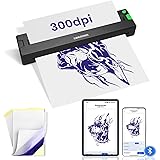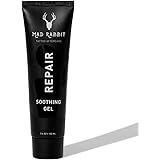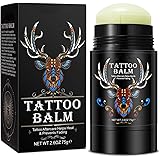Creating compelling visual art often involves mastering the illusion of depth. Many artists find that their hand-lettered or calligraphic pieces, while beautiful in their intricacy, can sometimes lack the dynamic impact that comes with three-dimensionality. The journey from flat letters to captivating, volumetric forms can seem daunting, yet it is a skill that dramatically elevates any design. Fortunately, with the right techniques and understanding, transforming ordinary typography into striking 3D letters is an achievable artistic endeavor.
The visual demonstration, such as the one featured above by master calligrapher Tolga Girgin, serves as an excellent starting point for understanding the practical application of these techniques. This guide aims to expand upon the visual learning, providing a detailed breakdown of the principles and practices involved in crafting stunning 3D letters calligraphy, ensuring your creations pop off the page with remarkable realism and artistic flair.
Understanding the Fundamentals of 3D Lettering and Dimensional Calligraphy
The essence of creating 3D letters lies in manipulating light, shadow, and perspective to trick the eye into perceiving depth on a two-dimensional surface. This artistic illusion is not merely about drawing thick lines; instead, it is a nuanced process that involves a thoughtful approach to each element of your lettering. Effective dimensional calligraphy requires an understanding of how objects occupy space and how light interacts with them.
Historically, the development of perspective drawing, notably during the Renaissance, significantly influenced how artists represented three-dimensional space. While we may not be drafting full architectural scenes, the foundational principles remain consistent for adding depth to typography. Understanding concepts such as vanishing points and the consistent direction of a light source is paramount for achieving believable results in your 3D lettering.
Essential Tools for Crafting Realistic 3D Letters
As demonstrated in the accompanying video, the right tools are crucial for precision and impact. Tolga Girgin expertly utilizes a Pilot Parallel Pen and a pencil, each serving a distinct purpose in the creation of his intricate 3D letters.
- Pilot Parallel Pen (3.8mm): This specialized calligraphy pen is ideal for creating sharp, consistent lines and broad strokes, which are foundational for the primary letterforms. Its unique nib design allows for a clear distinction between thick and thin lines, a hallmark of traditional calligraphy and a key component in establishing the base structure for 3D elements. The 3.8mm size is particularly versatile, offering enough breadth for bold letter bodies while still allowing for control.
- Pencil: A standard pencil, often in varying lead hardness (e.g., HB, 2B, 4B), is indispensable for sketching initial guidelines, outlining the extruded forms, and, most importantly, for applying subtle and gradual shading. The ability to create smooth gradients with a pencil is critical for mimicking the way shadows naturally fall and transition across surfaces.
In addition to these, other tools that can be considered for enhancing your dimensional calligraphy include: rulers for precise straight lines, erasers (kneaded or stick) for clean-up, and various paper types (smooth Bristol board or heavy cardstock) that can withstand multiple layers of ink and pencil without bleeding or warping.
The Step-by-Step Process for Dynamic 3D Letters Calligraphy
While the video provides a superb visual walkthrough, breaking down the process into actionable steps can further solidify your understanding of how to make 3D letters.
1. Laying the Foundation: Initial Letterforms with Calligraphy
The first step involves drawing your base letterforms. This is where your calligraphy skills come into play. Using your Pilot Parallel Pen, carefully ink the word or phrase you wish to transform. Focus on achieving clean lines, proper spacing, and consistent stroke weight. This initial layer establishes the “face” of your 3D letters.
It is often recommended that these initial forms are slightly larger than typical, as the addition of depth will naturally make them feel more substantial. Furthermore, consider the inherent structure of each letter; certain letterforms, such as ‘O’ or ‘S’, may require specific considerations for how their curves will extrude in three dimensions.
2. Defining Depth: Extrusion and Perspective in 3D Lettering
Once your base letters are complete, the illusion of depth is initiated. This is achieved by “extruding” the letters, meaning you create the sides that suggest thickness. This process requires a consistent light source and perspective.
To begin, select a single, consistent light source for your entire word. For example, imagine the light coming from the top-left. This dictates where shadows will fall and where the “extruded” parts of your letters will be visible. From various points along your primary letterforms, typically the corners or edges furthest from the light, draw parallel lines extending in a consistent direction. These lines define the depth. For instance, if the light is from the top-left, the bottom-right edges of your letters will likely be the ones to “extend” outward.
A simpler approach, often used by Tolga Girgin, involves a single-point perspective where all extension lines converge towards an imaginary vanishing point off the page. This creates a powerful, consistent sense of depth.
3. Establishing the Light Source and Applying Shadow Effects
The most impactful element in rendering realistic 3D letters is the strategic application of shadows. The placement and intensity of shadows are entirely dependent on your chosen light source. Areas facing away from the light source will be darker, while those directly illuminated will appear brighter or even highlighted.
With your pencil, carefully shade the extruded surfaces. The shading should gradually darken as it moves further away from the light source or into recessed areas. Consider where the letter itself casts a shadow onto the “ground” or the surface it appears to rest upon. This cast shadow further grounds your 3D letters in their perceived environment. Moreover, varying pressure with your pencil can achieve a smooth gradient, which is essential for a natural transition of light and shadow.
It is often observed that artists who spend more time practicing different shading techniques, such as cross-hatching or blending, achieve more sophisticated and convincing results in their 3D lettering projects.
4. Refining Details and Adding Highlights for Visual Depth
After the primary shading is complete, the final touches bring your 3D letters to life. This involves refining the edges, ensuring smooth transitions, and adding highlights. Highlights are small, bright areas on the surfaces directly facing the light source, giving a sense of shine or reflectivity.
A fine-tipped white gel pen or a very light pencil can be used for subtle highlights. Additionally, consider how the inner curves and edges of your letters might also catch light or fall into deeper shadow. These minute details significantly enhance the perceived volume and realism. Any guide marks should be carefully erased at this stage, ensuring a clean and polished final piece.
Advanced Considerations for Mastering 3D Letters Calligraphy
Once comfortable with the fundamental techniques, there are several advanced concepts that can be explored to further enhance your 3D lettering skills and create truly unique pieces.
Incorporating Texture and Materiality
Beyond simple shading, the illusion of texture can be added to your 3D letters. Imagine letters made of wood, metal, or stone. This involves specific shading patterns and details: a grainy texture for wood, reflective highlights for metal, or rough edges for stone. This adds another layer of visual interest and believability to your dimensional calligraphy.
Playing with Optical Illusions and Unusual Perspectives
While basic one-point perspective is a great starting point, exploring two-point or even three-point perspectives can lead to more dynamic and dramatic 3D letters. Furthermore, experimenting with curved or warped perspectives, where the letters appear to bend around an imaginary object or stretch into the distance, can create intriguing optical illusions that captivate the viewer.
Studies in visual perception have indicated that unique perspectives can significantly increase engagement, as the brain actively works to interpret the unusual spatial arrangements presented in 3D lettering art.
Utilizing Color and Blending Techniques
While the video showcases monochromatic 3D lettering, the introduction of color opens up a vast array of possibilities. Gradients of color can be used to enhance the sense of depth, with warmer colors often appearing to advance and cooler colors receding. Understanding color theory and how different hues interact under specific lighting conditions can transform your 3D letters into vibrant, multidimensional masterpieces.
For instance, a shift from a bright yellow at the top of a letter to a deep orange or red in the shaded areas can beautifully mimic how light catches a surface. Techniques such as watercolor blending or marker layering become invaluable for achieving these sophisticated color transitions.











